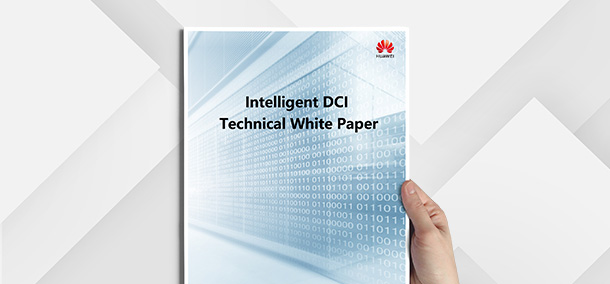This site uses cookies. By continuing to browse the site you are agreeing to our use of cookies. Read our privacy policy>
![]()
This site uses cookies. By continuing to browse the site you are agreeing to our use of cookies. Read our privacy policy>
![]()
Enterprise products, solutions & services
[Shenzhen, China, September 12th, 2019] Huawei recently released the industry's first Intelligent DCI Technical White Paper, which comprehensively describes the challenges faced by data center interconnect (DCI) in the enterprise cloud era, proposes ideas and key technologies for the evolution of DCI towards intelligence, and describes the latest research achievements.

Huawei Releases Intelligent DCI Technical White Paper
Jin Zhiguo, President of Huawei Enterprise Transmission & Access, commented: "Huawei has been committed to strategic investment and technological innovation in the optical network field for many years. This white paper on intelligent DCI is designed to be used by industry partners to promote the evolution of enterprise DCI towards intelligence, simplicity, large capacity, and high reliability, and help enterprises build a solid network foundation for digitalization."
According to the latest market forecast by GlobalData, the global cloud ecosystem will grow at a compound annual growth rate (CAGR) of 25.3%, reaching US$720 billion by 2022. As more and more enterprises migrate their services to the cloud, cloud service providers and enterprises are placing increasingly stringent requirements on data center interconnect. In addition, to further improve user experience, they are gradually extending their cloud computing capabilities to the edge, making the deployment of a highly reliable and ultra-large bandwidth DCI network an urgent requirement.
This white paper introduces three challenges in DCI: limited optical fibers and equipment room resources within data centers; difficult data center interconnect expansion; and complex network O&M. First, with the continuous increase of DCI traffic, optical fibers and equipment room space become increasingly limited, and the cost of optical fiber and cabinet rental is increasing. Second, to adapt to changing service requirements, data centers frequently require expansion. During data center expansion, the WDM devices of DCI take the longest time to deploy due to added complexity. Third, traditional DCI device O&M is complex and requires highly skilled engineers. What's more, reactive O&M cannot meet the needs of data centers in the cloud era.
The white paper also analyzes the future-oriented evolution and key technologies of DCI solutions and shares Huawei’s latest practices.
1. Cost control and space optimization: By expanding the available spectrum and increasing the signal rate carried by each wavelength, the single-fiber transmission capacity can be increased. In addition, by sharing the optical-electrical platform and improving the board integration, the equipment cost and footprint will be reduced.
2. Automatic deployment: The optical layer is simplified to reduce the number of fiber connections, and configuration-free and commissioning-free technologies are explored to improve deployment efficiency. Such technologies include automatic fiber connection and optical path commissioning.
3. Intelligent O&M: Parameters are collected in real time and excellent computing power and intelligent algorithms are used to implement network sub-health prediction and accurate troubleshooting. This transforms O&M from reactive to proactive.